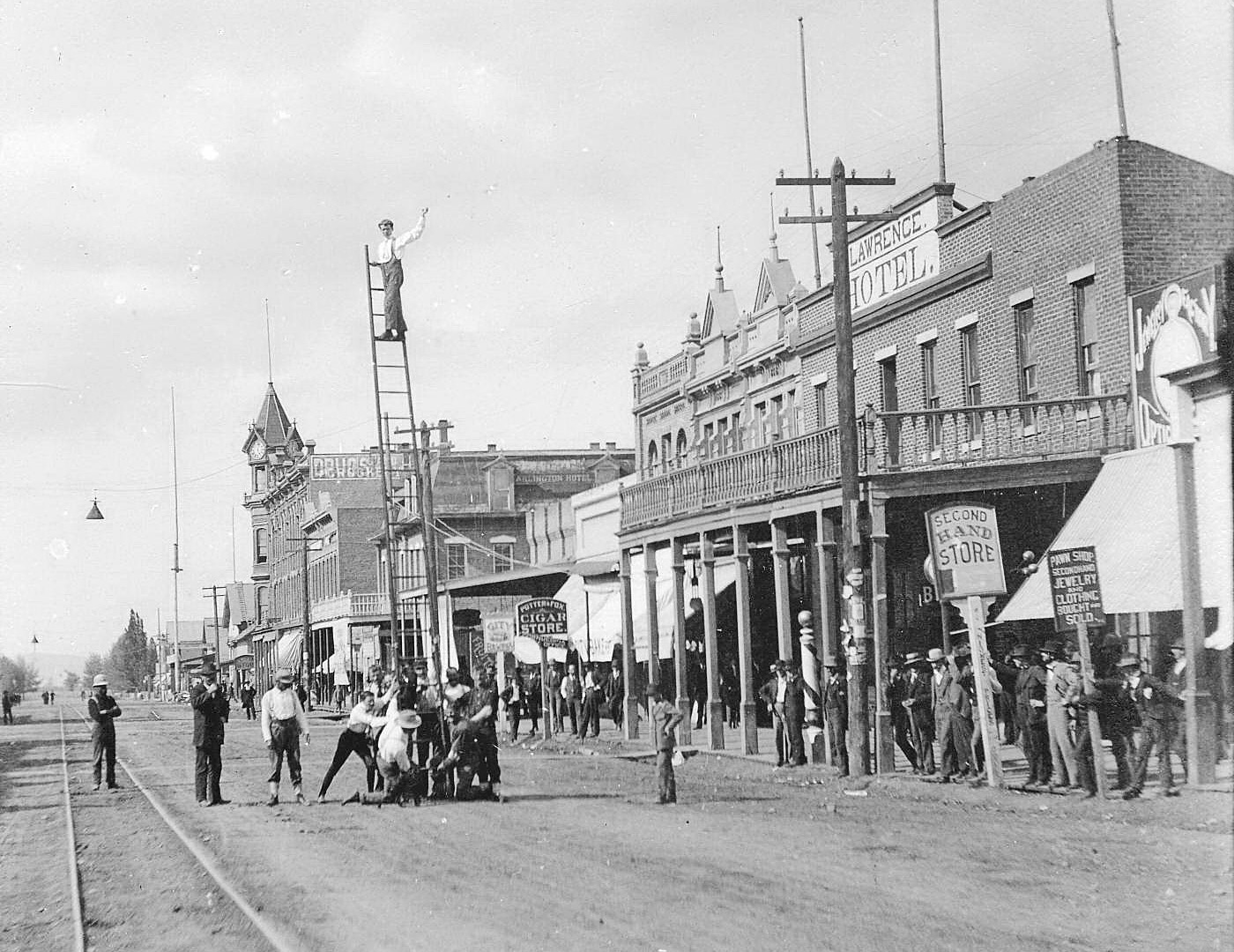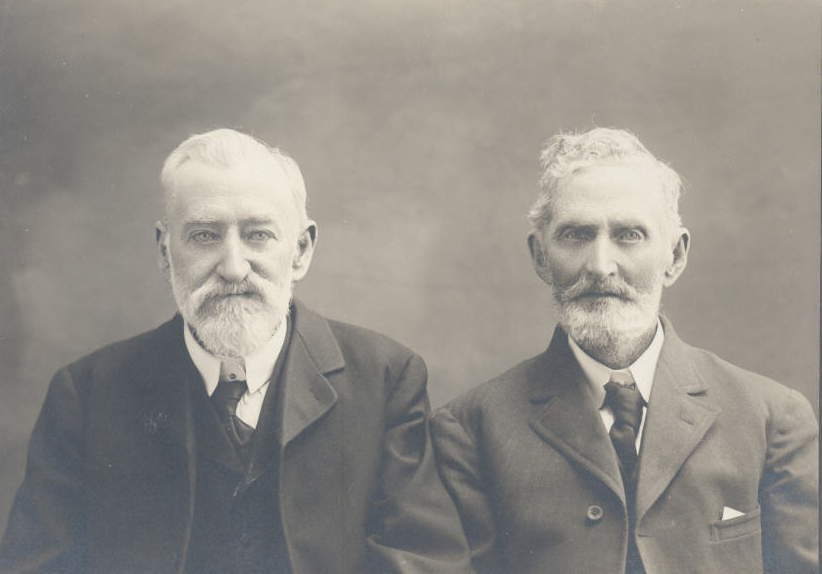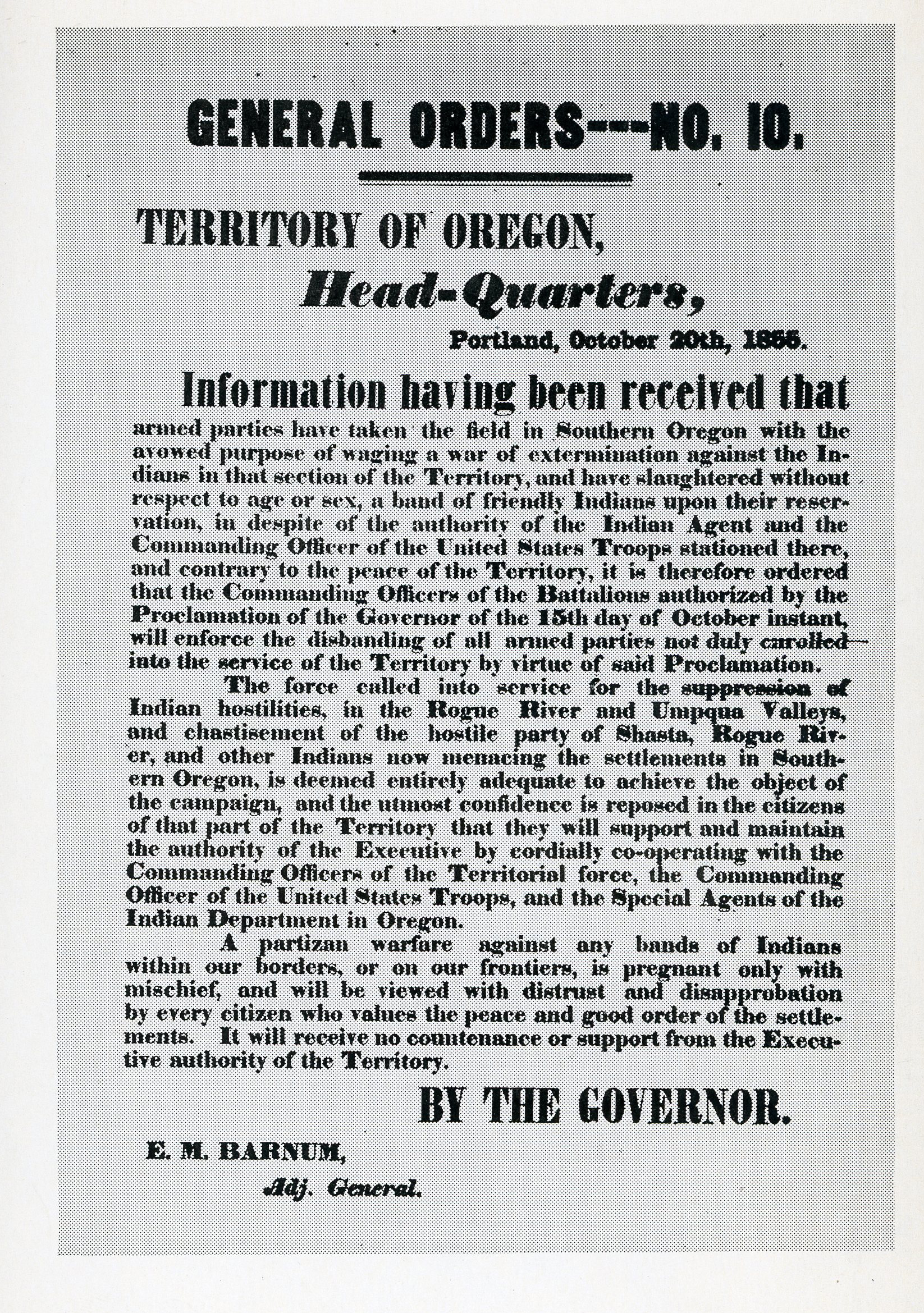William Henderson Packwood was the youngest delegate to Oregon's Constitutional Convention in 1857 and became a versatile entrepreneur in the new state. A soldier, miner, cattle rancher, merchant, ditch and road builder, ferry owner, and public servant, he was a founder of two Baker County boom towns—Auburn and Sparta. He was also the great-grandfather of U.S. Senator Robert Packwood.
William Packwood was born near Mount Vernon, Illinois, on October 23, 1832. The family settled in Sparta and, when he was fourteen, moved to Springfield, where Packwood clerked in a store, often meeting Abraham Lincoln on his way to work. In 1848, just before his sixteenth birthday, Packwood persuaded his father and the U.S. Army to allow him to enlist. In the summer of 1849, his company escorted an army general and his retinue on the Oregon Trail from Fort Leavenworth, Kansas, to Fort Hall in the Oregon Country, and then southwest on the California Trail to Sacramento.
In April 1850, Packwood boarded the Ewing, a revenue cutter bound for his new posting at Fort Vancouver, Washington Territory. Unable to cross the bar at the mouth of the Columbia River, he traveled upriver by whaleboat. After about a year at Fort Vancouver, he was sent to Benicia Barracks, near San Francisco, then north to Fort Orford on the schooner Captain Lincoln as part of C Troop of the First United States Dragoons. The schooner ran aground in a storm off Coos Bay on January 3, 1852. All aboard made it to shore, where they erected what they called Camp Castaway. By June, Packwood was at Fort Orford.
After his discharge from the army in September 1852, Packwood found work packing, mining, and cattle ranching on the Coquille River on the south Oregon Coast. In January 1854, he was chosen to be secretary of the Coos County Volunteers, a group of “miners and citizens” who met in Curry County for the purpose of investigating Indian activity they considered suspicious. On January 27, the Volunteers perpetrated what became known as the Nasomah Massacre, a “mass murder,” as Indian Agent F. M. Smith described it, that killed fifteen men and one woman.
In 1855, Packwood was captain of the Coquelle Minute Guards, a volunteer militia company that engaged in an armed conflict with Rogue River Indians. The conflict erupted after the Lupton Massacre, which occurred near the Table Rock Indian Reservation on October 8, 1855, and inflamed the Rogue River Indians.
As Oregon Territory prepared for statehood in 1857, Curry County sent the twenty-four-year-old Packwood as its delegate to Oregon's Constitutional Convention. He served on the state seal committee, which adopted his suggestion of a sea view and an elk.
The gold rush of 1862 lured Packwood to eastern Oregon. Arriving at Blue Canyon, southwest of present-day Baker, he helped lay out the town of Auburn, which that summer swelled to several thousand miners—customers for Packwood's hastily built mercantile store. Auburn briefly served as the county seat for newly created Baker County in September 1862. Before there was a state-sanctioned court, Packwood was elected as one of three judges, who condemned a murderer to hang, and was appointed the county's first school superintendent. He married Johanna O'Brien, the county's first teacher and appointed a successor for her position. They had five children.
Between 1862 and 1874, Packwood was the main organizer of the construction of three major ditches that supplied water to placer mines in Baker County—Auburn Ditch (25 miles), Eldorado Ditch (125 miles), and Sparta Ditch (24 miles)—at a total cost of about a million dollars. He is credited with naming the mining town of Sparta for his hometown in Illinois. Between 1865 and 1868, Packwood and two partners organized the Oregon Road, Bridge, and Ferry Company which operated the Olds, Washoe, and Central ferries on the Snake River and a toll road up Burnt River Canyon, thus monopolizing traffic that used the toll road to reach the mines.
In 1870, William and Johanna Packwood moved to Baker City, the new county seat, where they built a house and, later, the Hotel Packwood, which Johanna Packwood ran. For many years, Packwood was Baker City auditor and police judge. While in his seventies he served as assistant postmaster.
Packwood died on September 21, 1917, the last surviving member of Oregon's Constitutional Convention. He is buried at Mt. Hope Cemetery in Baker City.
-
William Packwood.
Photo Courtesy of Baker County Library Historic Photo Collection
-
![]()
Auburn, Oregon, 1861.
Oregon Historical Society Research Library ba019806
Related Entries
-
![Auburn]()
Auburn
The short-lived mining town of Auburn was in the Blue Mountains in Bake…
-
![Baker City]()
Baker City
The skyline of Baker City, at an elevation of 3,440, is dominated by tw…
-
Eldorado Ditch
The El Dorado Ditch, also known as the Eldorado and the Big Ditch, was …
-
![Nasomah Massacre of 1854]()
Nasomah Massacre of 1854
Early explorers noted plankhouse structures up and down the Southern Or…
-
![Robert W. Packwood (1932- )]()
Robert W. Packwood (1932- )
Robert William "Bob" Packwood, a prominent United States Senator for tw…
-
![Rogue River War of 1855-1856]()
Rogue River War of 1855-1856
The final Rogue River War began early on the morning of October 8, 1855…
-
![Sparta ditch]()
Sparta ditch
The Sparta Ditch, a thirty-two-mile-long irrigation ditch straddling th…
Related Historical Records
Map This on the Oregon History WayFinder
The Oregon History Wayfinder is an interactive map that identifies significant places, people, and events in Oregon history.
Further Reading
Hiatt, Isaac. Thirty-one Years in Baker County: A History of the County from 1861 to 1893. Baker City: Baker County Historical Society, revised by Eloise Dielman with added photographs, election tables, and index, 1997. Originally published in 1893.
Stevens, W. W. "The Old Oregon Trail as told by the Trailers." Manuscript in Baker County Library, Baker City, Oregon, based on interviews of Baker County pioneers conducted 1912 to 1913. Chapters 9 through 22 are based on interviews of William H. Packwood.
Schwartz, E. A. The Rogue River Indian War and Its Aftermath, 1850–1880. Norman: University of Oklahoma Press, 1997.
Lockley, Fred. “Impressions and Observations of the Journal Man” (column), Oregon Journal, September 10, 1919.
Lockley, Fred. “Names of Streams and Hill Result in Early Day Oddities,” Oregon Journal, July 23, 1916.
Victor, Frances Fuller. The Early Indian Wars of Oregon. Salem, OR: F. C. Baker, State Printer, 1894.
Oregonian, November 26, 1911.
Oregonian, February 20, 1915.
Oregonian, September 22, 1917.
Oregonian, January 29, 1928.










